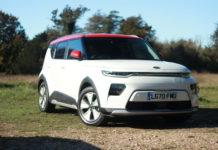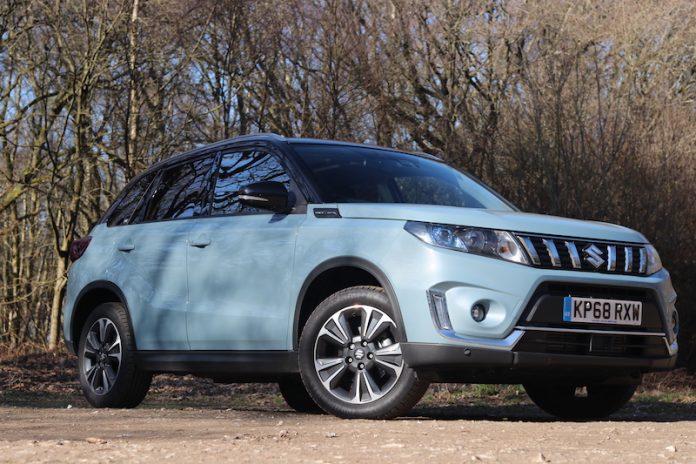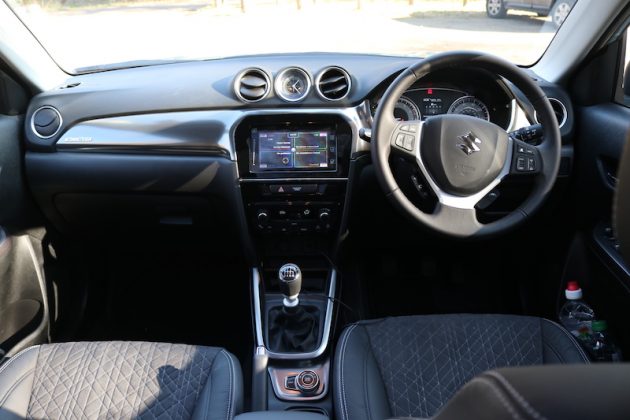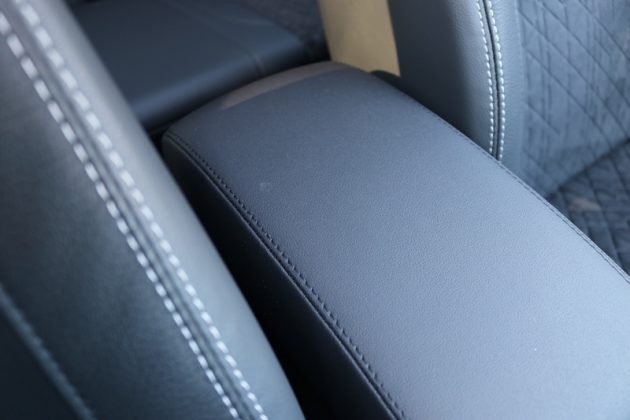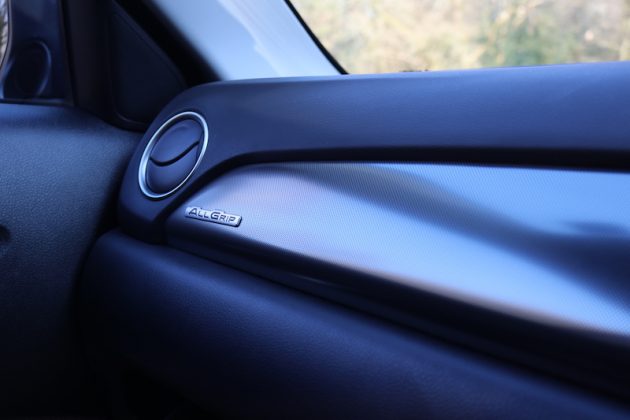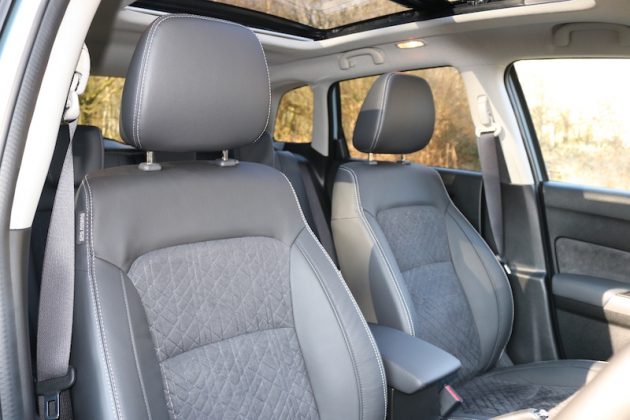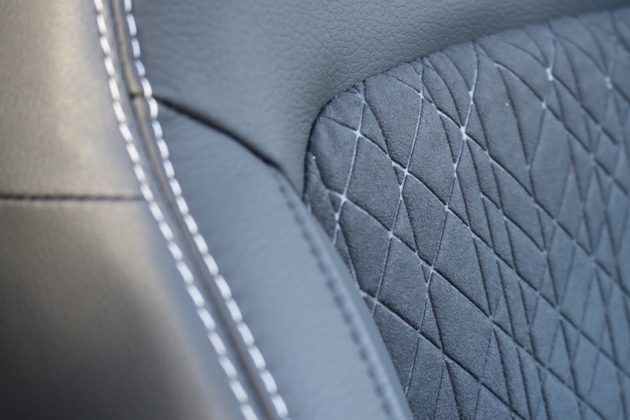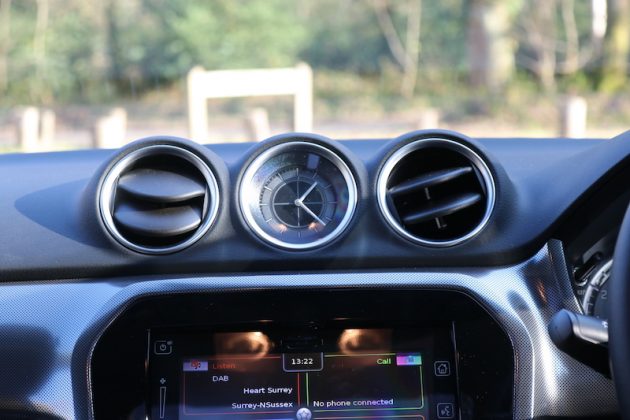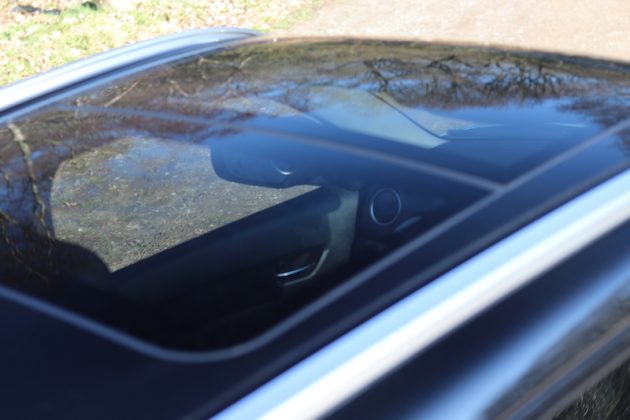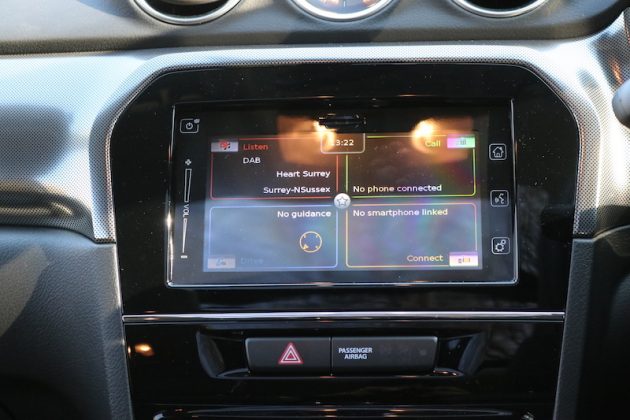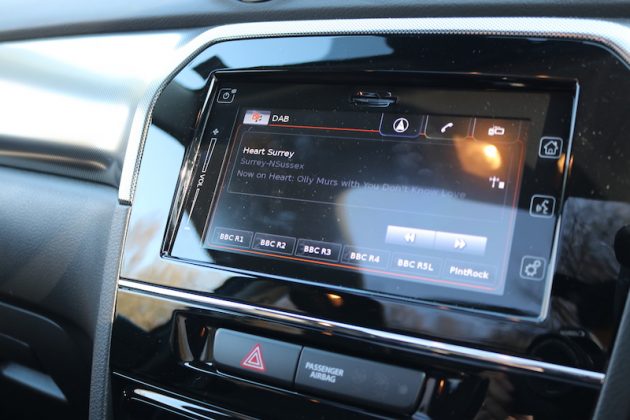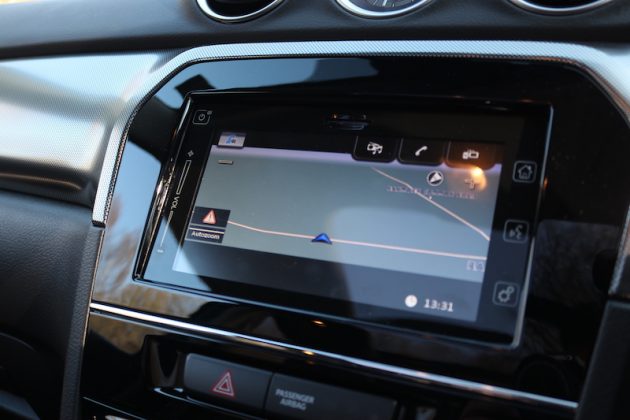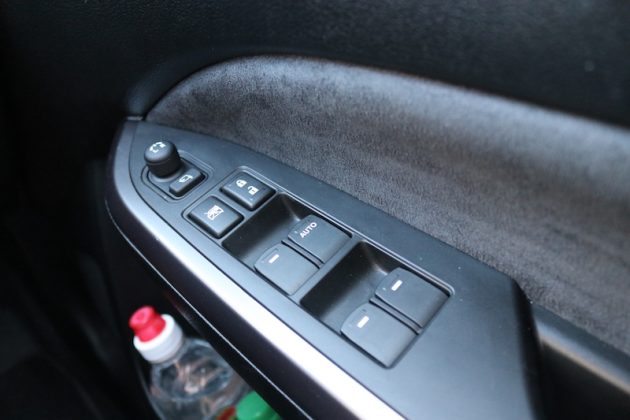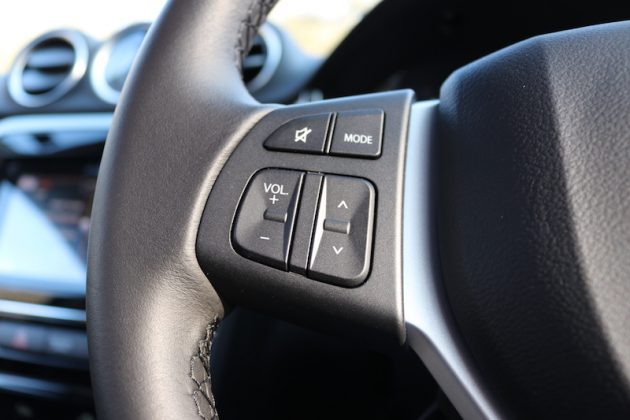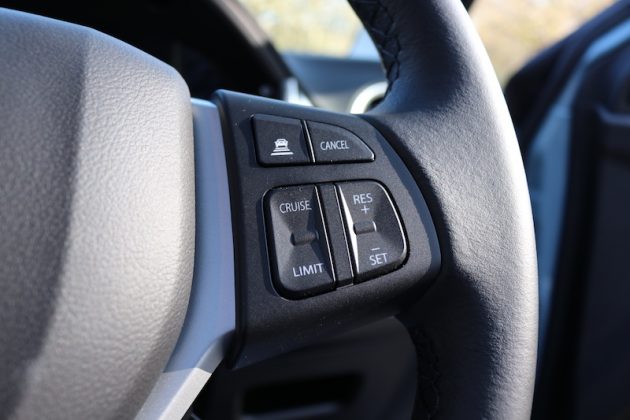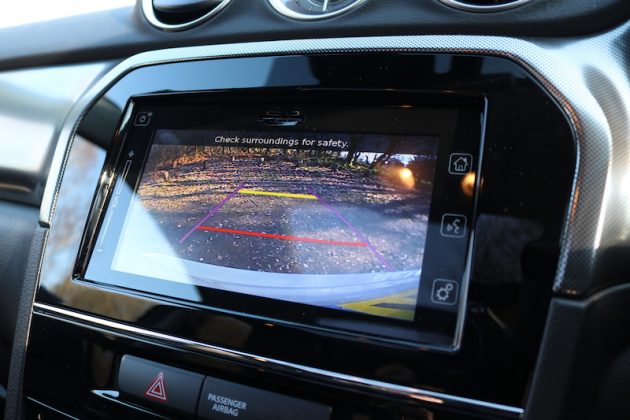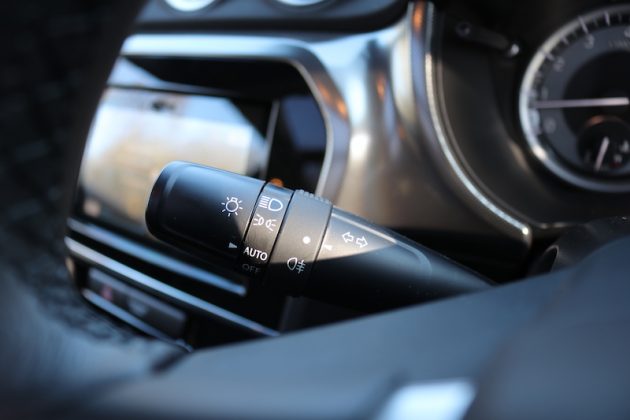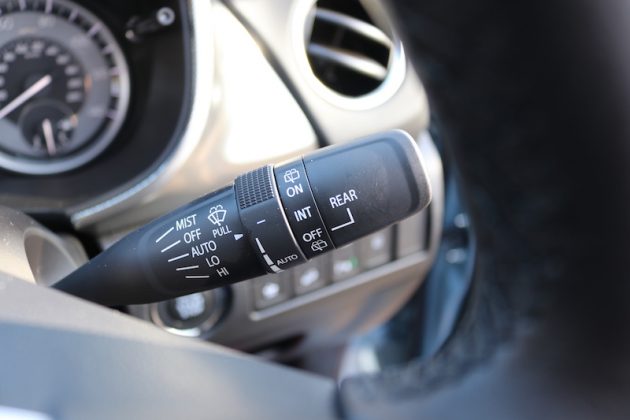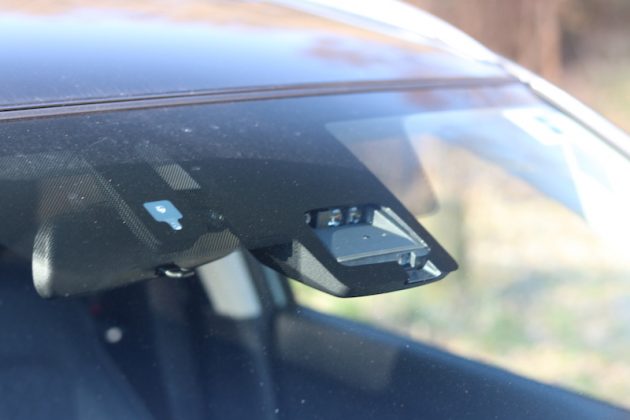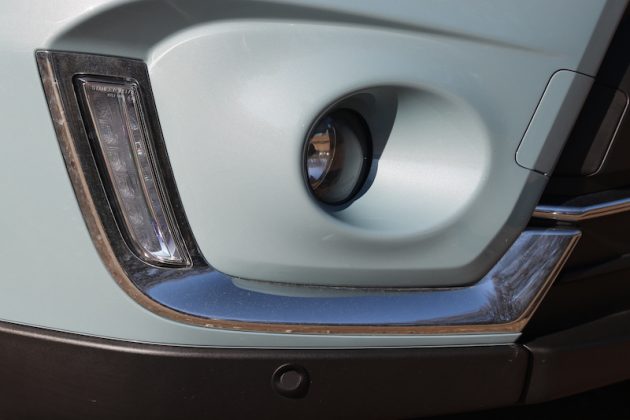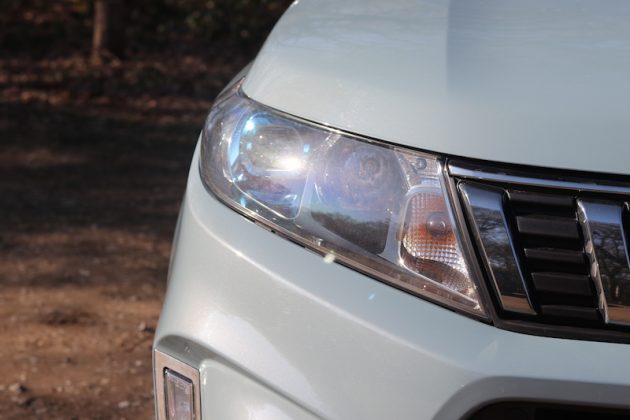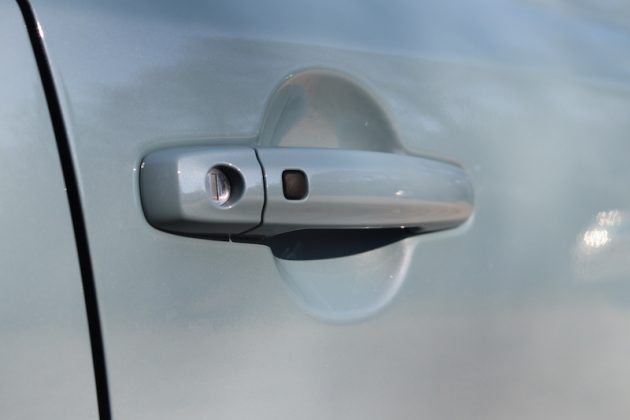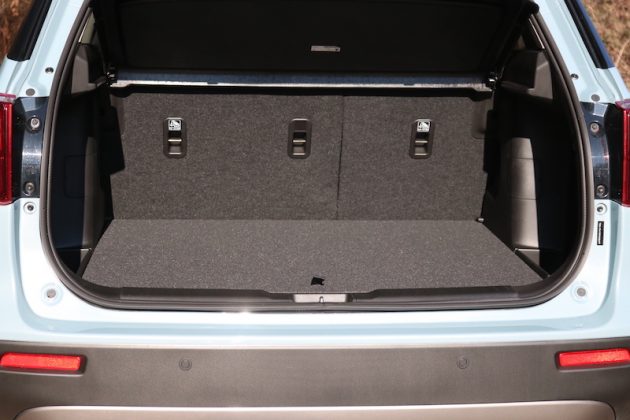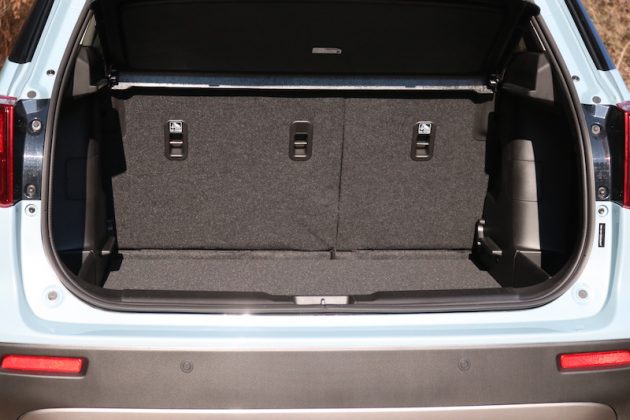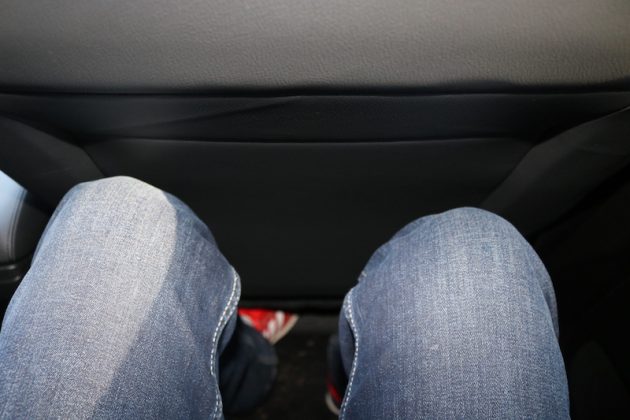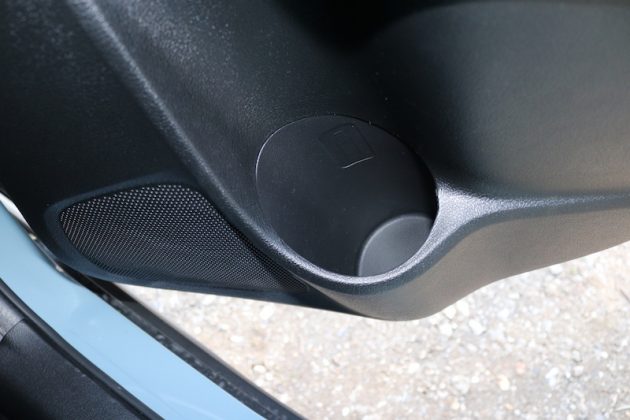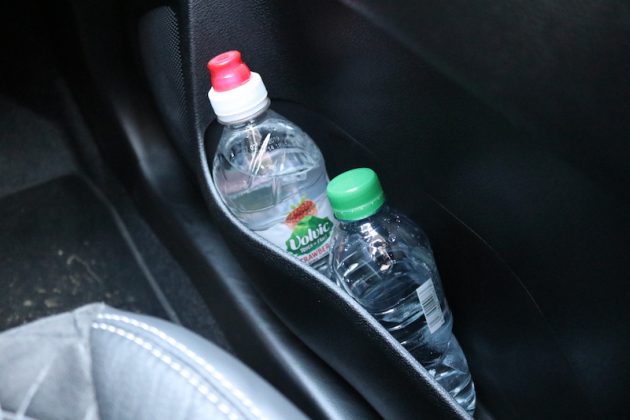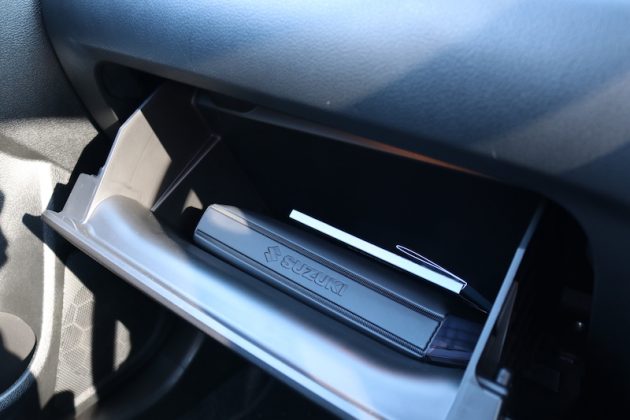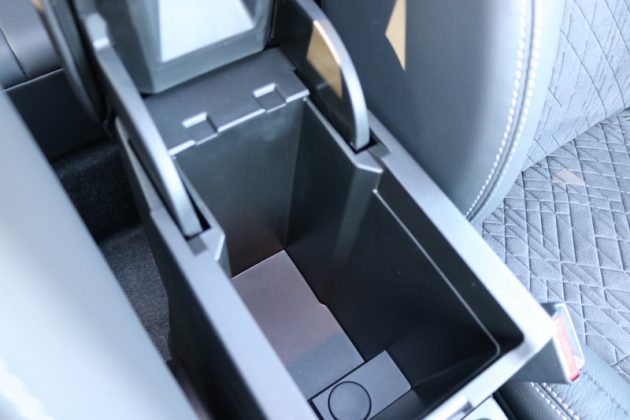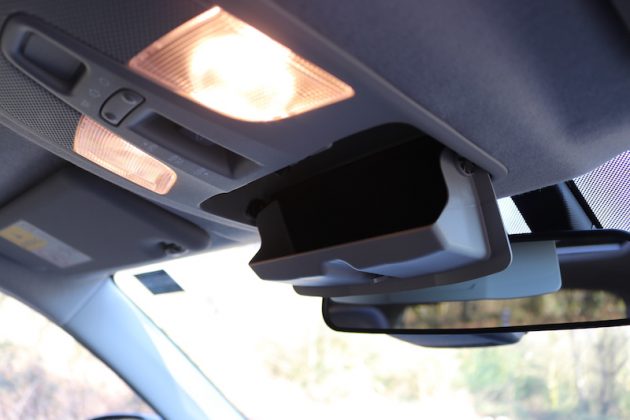Seat Arona, Peugeot 2008, Renault Captur. These are all popular small SUVs, but the car featured in this review has been around for donkey’s years, since the late 80s in fact. Long before SUVs were the ‘it’ thing. It is of course, as you’ve read in the title, the Suzuki Vitara. The fourth generation has recently been given a facelift, but is it up to date, or is it a has-been?
Renewed Vit-ality
One of the key changes for the face-lifted Vitara is the new choice of engines. The lineup is pretty straightforward as there was just engines to choose from, both of which are petrol. This now means that none of the Suzuki range in the UK offers a diesel, as the previous Vitara was the last model standing that did. Therefore, if you’re looking for a diesel, you’ll need to look elsewhere.
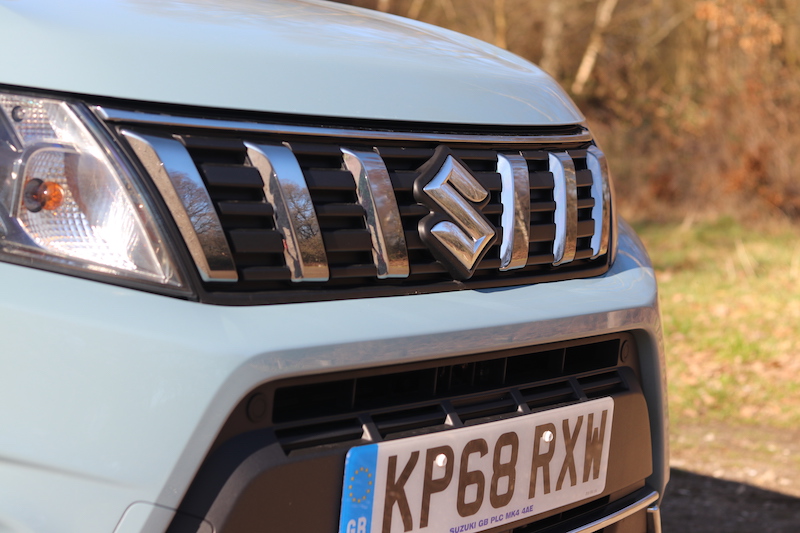
In regards to the engines on offer, you can either have a 1.0 litre turbocharged three cylinder, which produces 111hp, and a 1.4 litre turbocharged four cylinder BoosterJet, which produces 140hp. Incidentally, the 1.4 unit is the one used in the Swift Sport, although the torque is a little lower when dumped in to a Vitara.
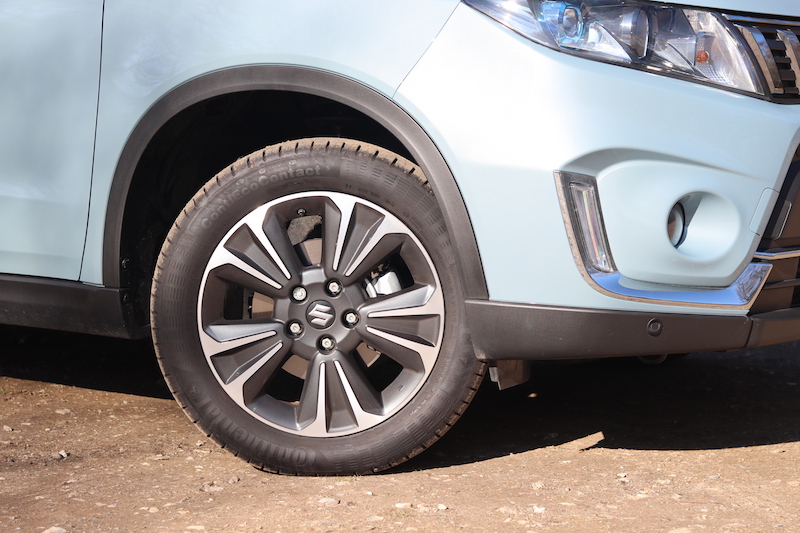
It’s also the engine used in the car you see here. Along with 140hp, it offers 220Nm of torque, which fed to all four wheels via a slick-changing 6-speed manual gearbox. 62mph is dealt with in 10.2 seconds, but like other Suzuki cars, it feels quicker in real life, and the top speed is a respectable 124mph – not that you’ll really need that in the UK, of course.

What else is new?
As well as the new lineup of engines, the new Vitara gets a soft touch dashboard following customer feedback, and in the case of the range-topping SZ5, you also get rather plush leather and suede seats. The new Vitara also gets a colour display in the instrument cluster like you get in other Suzuki models, plus all Vitara models now come with a front centre armrest – another result of customer feedback.
So, it goes to show, people power really does work. The outside has been given a bit of a spruce up as well as there are new alloy wheel designs, and at the rear you get new taillights with LEDs in them. So far, it’s all looking rather promising, but how does the Vitara fare on the open road?
Putting the ‘Boost’ in BoosterJet
As I mentioned earlier, the four pot underneath the bonnet is closely related to that in the Swift Sport, therefore it’s quite punchy. There is a smidge of lag, but it’s far from intrusive, as the car starts to pull strongly from around 2,500 revs. The Vitara is far from a heavy car as well, so it’s not as if there’s a lot of weight for this 1.4 petrol to lug around, meaning the car feels more responsive than you may expect.

The gearchange is satisfying, as it’s slick and it’s got a chunky kind of feel to it, although the change in to third does feel a bit clunky. For those of you looking for an auto, fear not, as this engine – and the 1.0 litre petrol for that matter – is available with a 6-speed automatic. The manual is a decent match for this engine, though, so I would urge to go for that if possible.

Some SUVs can be a bit boring to drive, and to be fair, they’re not all designed to be fun to drive. However, the Vitara does well to buck this trend, as it’s got quite a fun, playful character and it’s also quite joyful to chuck about in the corners.
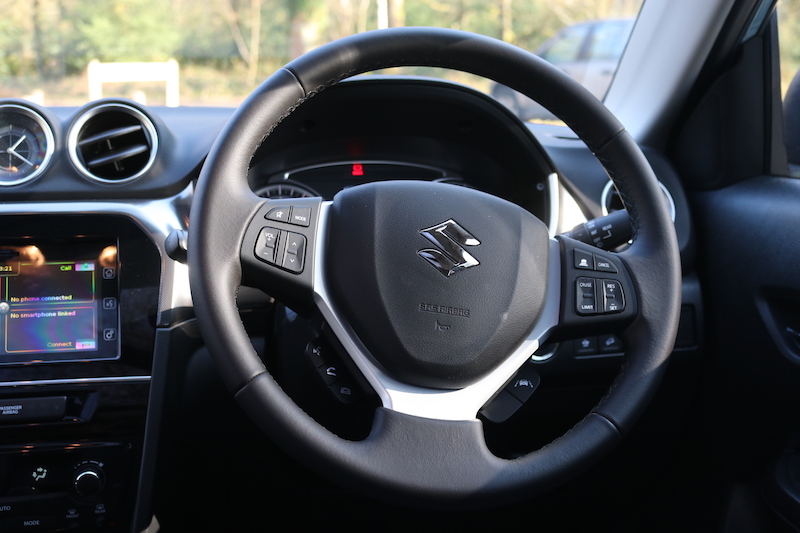
Granted, the steering has a bit of a deadzone off-centre, but it’s direct enough, although I found the weighting and feedback to be rather inconsistent. There’s a decent amount of grip in the corners, although there is a bit of body roll to contend with. Does it detract from the experience? No, it doesn’t, and overall, the Vitara is a bit of a hoot to drive.
What if I don’t care about handling?
Let’s bring things back down to earth a bit, as I imagine some of you aren’t too fussed whether it can hit an apex or not; you want to know whether it’s comfortable, refined and easy to drive. Well, let’s start off with comfort. The ride is noticeably better than the Sportage I drove last month, although that’s not exactly the achievement of the century.
Mind you, the Vitara doesn’t quite soak up the bumps as well. Sizeable imperfections in the road or potholes will send a bit of a jolt in to the cabin and you’ll met with a bit of a thud from the suspension. However, for the most part, you should find the Vitara perfectly comfortable, especially with the leather and suede seats in the SZ5 – they’re lovely! They have a nice upmarket feel to them as well, which helps to give a premium effect to the cabin.
Don’t get me wrong, there are still a fair few hard plastics and cheaper materials in the cabin, plus the clock looks like it was bought from Poundland, but at least Suzuki is trying. You also get a lovely panoramic roof which give the cabin a specious, airy feeling, although it does mean sunlight reflects off the the plastic trim on the dash, which can be a little off-putting.
In regards to refinement, it’s OK, it’s nothing amazing. Wind noise isn’t too bad, considering the car it is, but the large alloys do generate a fair bit of road noise, so it’s not the quietest SUV going. Mind you, it’s more refined than a Dacia Duster, and it’s more comfortable.
Is it easy to drive? Yes it is. The biting point is easy to find, the pedals have got a good weight to them, plus getting a good driving position is easy thanks to steering wheel that adjusts for rake and reach, as well as a driver’s seat with decent adjustment. As standard you’ve also got a smorgasbord of driver assistance systems to make life behind the wheel easier.
You’ve got autonomous emergency braking, which is admittedly a bit too panicky for my liking, lane departure warning & prevention, adaptive cruise control, traffic sign recognition, blind spot warning and rear cross traffic alert. If worst comes to worst, you’ve also got seven airbags as standard.
Full marks from Euro NCAP
Given what was stated above, it comes as little surprise that the Vitara was awarded five stars from Euro NCAP, with adult occupancy scored at 89% and child occupancy scored at 85%. Safety Assist was scored at 75%, but that was for the last model, the new model has more safety tech and it’s also the first Suzuki to feature blind spot warning and rear cross traffic alert.
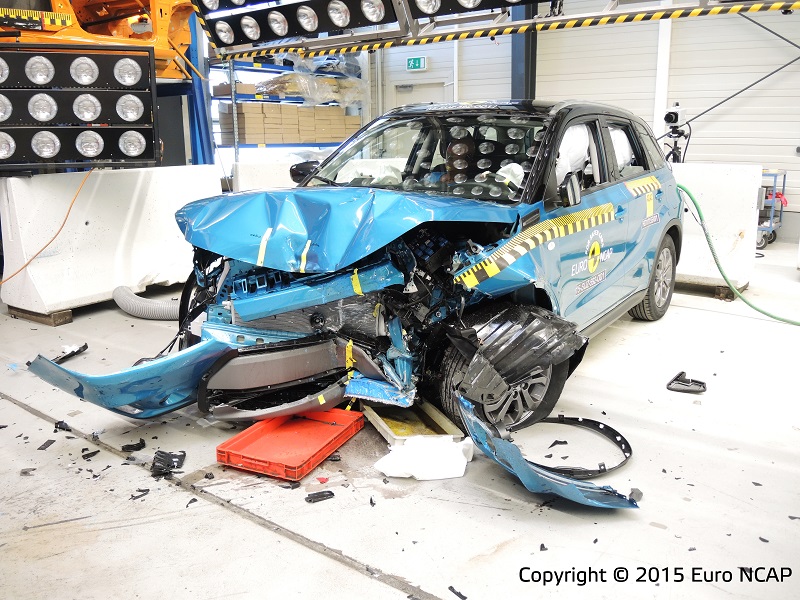
So the new Vitara has plenty of safety kit, but what other goodies does it have?
That, of course, depends on which trim level you go for. Suzuki has kept things pretty simple, and offered three trim levels; SZ4, SZ-T and SZ5, the model I have here. SZ4 starts from a penny-pinching £16,999 offering features such as 16″ alloy wheels, LED daytime running lights, cruise control, Bluetooth and climate control. Lovers of DAB radio will suffer though, as it’s not included – you’d need to opt for the SZ-T.
Speaking of which, that trim level starts from £18,999 offering DAB radio, 17″ alloy wheels, reversing camera, rear privacy glass, navigation, and smartphone connectivity. That of course, leaves the range-topping SZ5, which starts from £22,499. This trim level adds the dual camera brake support system, front and rear parking sensors, electrically folding door mirrors, leather and suede seats, 17″ alloy wheels with polished finish, and keyless entry.
Sadly, features such as heated seats, heated steering wheel and wireless phone charging do not come as standard, nor can they be added on as options. You can have optional paint though, which is what this model has. It’s called Ice Greyish Blue because, well, it’s a Greyish Blue. It’s a silly name, but I really like it. It’s contrasted with a black roof, and it will set you back £800 – yeah I know, it’s a bit pricey by Suzuki’s standards.
On the whole, the Vitara represents good value, but how spacious/practical is it?
It goes without saying – although I’ve probably said it before in other reviews – that an SUV needs to offer a good amount of space and practicality. Let’s start with the boot shall we. Normally an all wheel drive system can rob boot space, but thankfully, that’s not the case with the Vita, as it offers the same as the front wheel drive model, 375 litres.
The loading area is pretty decent, and the boot floor is adjustable. If you need more space, though, you can of course fold down the 60/40 rear seats to give you 710 litres. In case you’re wondering, there’s no spare wheel as standard, instead you get a puncture repair kit.
Let’s move in to the rear, as always, the driver’s seat has been set for me – I’m 6’2″. Legroom and knee room are pretty agreeable, plus I can fit my feet underneath the seat it front of me. However, headroom for me is tight, which is not helped by the panoramic roof, so if you’re a taller person, you may want to take first dibs on the front passenger seat.
Sadly, there’s no armrest to be found in the back, plus there’s no ports to charge smartphones or tablets, which could make long family road trips is a bit stressful. You do however, get decent sized doorbins but the door themselves don’t open that wide and the rear wheelarches make getting in and out a litte tricky.
That leaves the front, which is a pretty good place to be. As mentioned earlier, you now get an armrest as standard on all models, which is adjustable, plus it offers storage as well. The doorbins are of a good size, plus you get a shelf in the middle where you can store a smartphone, two cupholders, a sunglasses holder and a glovebox which offers an agreeable amount of size.
Getting a good driving position is easy as the steering wheel adjusts for rake and reach, plus the seat has got a good level adjustment. Shoulder and elbow are agreeable as well, so you shouldn’t find your front passenger too close for comfort.
How does it deal with the muddy stuff?
There’s a decent chance that many buyers will never really need the Vitara’s off-road capabilities, but what about those that do? The car tested here has Suzuki’s Allgrip Select system, meaning it has a choice of different driving modes, Auto, Sport and Snow. There is also a ‘Lock’ function, which works with the Snow mode to give maximum traction. Does it work, though?
I found a local green lane to put the Vitara through its paces, and despite wearing road tyres – and being piloted by an off-roading numpty – it valiantly held it’s own. It did get a bit bogged down in a muddy rut on an a bit of undulating terrain, but with careful clutch work I was able to claw the car out, which filled me with as much satisfaction as popping a bit of giant bubble wrap.
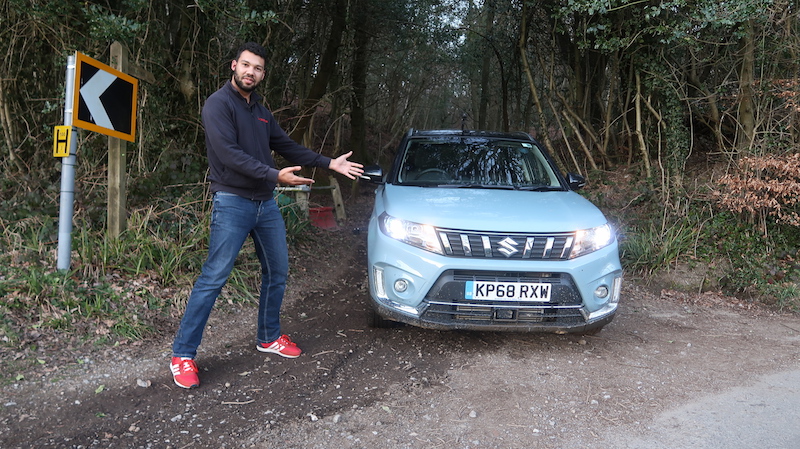
For the rest of the off-road drive, the Vitara performed well, often maintaining the grip needed to keep me moving in the right direction, plus the hill descent worked perfectly. Cracking stuff from a car that is unlikely to be used in such a manner, but it’s good to know it can do it, if needed – what a plucky little(ish) thing it is.
What about running costs?
On a combined run, this engine, when mated to four wheel drive and a manual gearbox, should offer up to 37.7mpg, using the new WLTP method of testing. In my experience I was actually able to squeeze 47mpg out of this 1.4 litre engine, but I’ll be honest, traffic has been a bit light in my recently because of the school holidays. If you’re looking for more economy, then check out the 1.0 litre engine, as that offers up to 45.9mpg on a combined run.
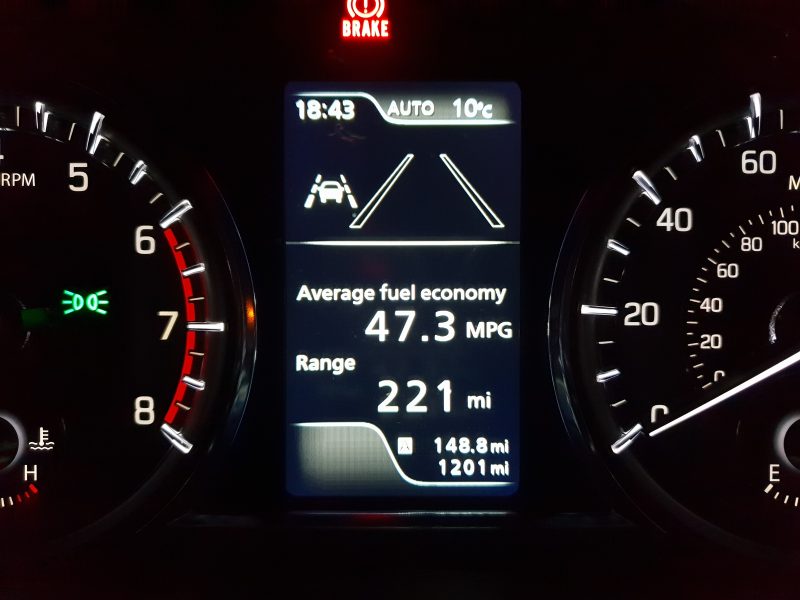
In regard to emissions, this engine, when mated to four wheel drive and a manual gearbox emits 169g/km of CO2, meaning for the first year you’ll be required to pay £205. However, if you go for the 1.0 litre manual, you’ll be required to pay £165 as it emits 139g/km. What about insurance? This car sits in insurance group 17E, whilst the 1.0 litre is 12E. For those of you concerned about warranty, the Vitara gets a standard 3 year warranty, although Suzuki’s are pretty reliable, so there’s a good chance you shouldn’t need to use it.
Final thoughts
I quite like the Vitara, as it’s fun SUV that’s got character. It also offers a high amount of kit at an affordable price, which is bound to make it an attractive purchase. Mind you, the SZ-T could be the better one to go in order to get more value.
It’s not perfect though, as some of the interior trim is still a little cheap looking, rear headroom could be better, and the SZ5 is a bit of a leap up in price compared to the SZ-T as well. The lack of diesel may also put some buyers off, but Suzuki is doing what it thinks is best, given the current climate.
However, I still feel that Vitara has a fair amount to offer and I like the improvements have made for the facelift model. It’s far from a has-been then, and I definitely think it’s an SUV you should consider having a look at.

Car Obsession Rating:  (4 / 5)
(4 / 5)
Pros:
- Fun to drive
- Good level of kit
- Lots of safety kit
- Decent rear legroom
- Should be reliable as a day is long
- Impressive off-road performance
- Peppy 1.4 litre engine
- New soft touch dash and front centre armrest
Cons:
- Lack of diesel may disappoint buyers
- Interior is still cheap in places
- Rear headroom is tight for taller occupants due to the panoramic roof
- SZ-T will represent better value for some
- Badge may be an issue for some
Rivals
 SEAT Arona
SEAT Arona
The Arona is arguably one of the best small SUVs money can buy right now, however, it’s approach is different to that of the Vitara. It’s more about style and being built for the urban environment, and as such, it has no all wheel drive option. It’s a smarter car, though, plus it’s nicer to drive and offers a bigger boot.
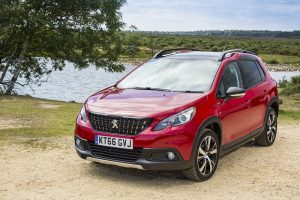 Peugeot 2008
Peugeot 2008
Like the Arona, the Peugeot 2008 is more about style and town driving as opposed to getting its tyres dirty on a country green lane. It offers a good amount of tech and there is a better choice of engines. The interior will be a better place to be compared to the Vitrara as well, if such things are of importance to you.
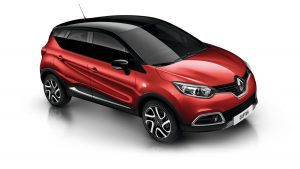 Renault Captur
Renault Captur
As with the Arona and the 2008, the Captur is not available with all wheel drive, as it’s more suited for style and inner city driving. It’s a practical that’s reported to have good levels of refinement, but rear leg room could be an issue for some.






